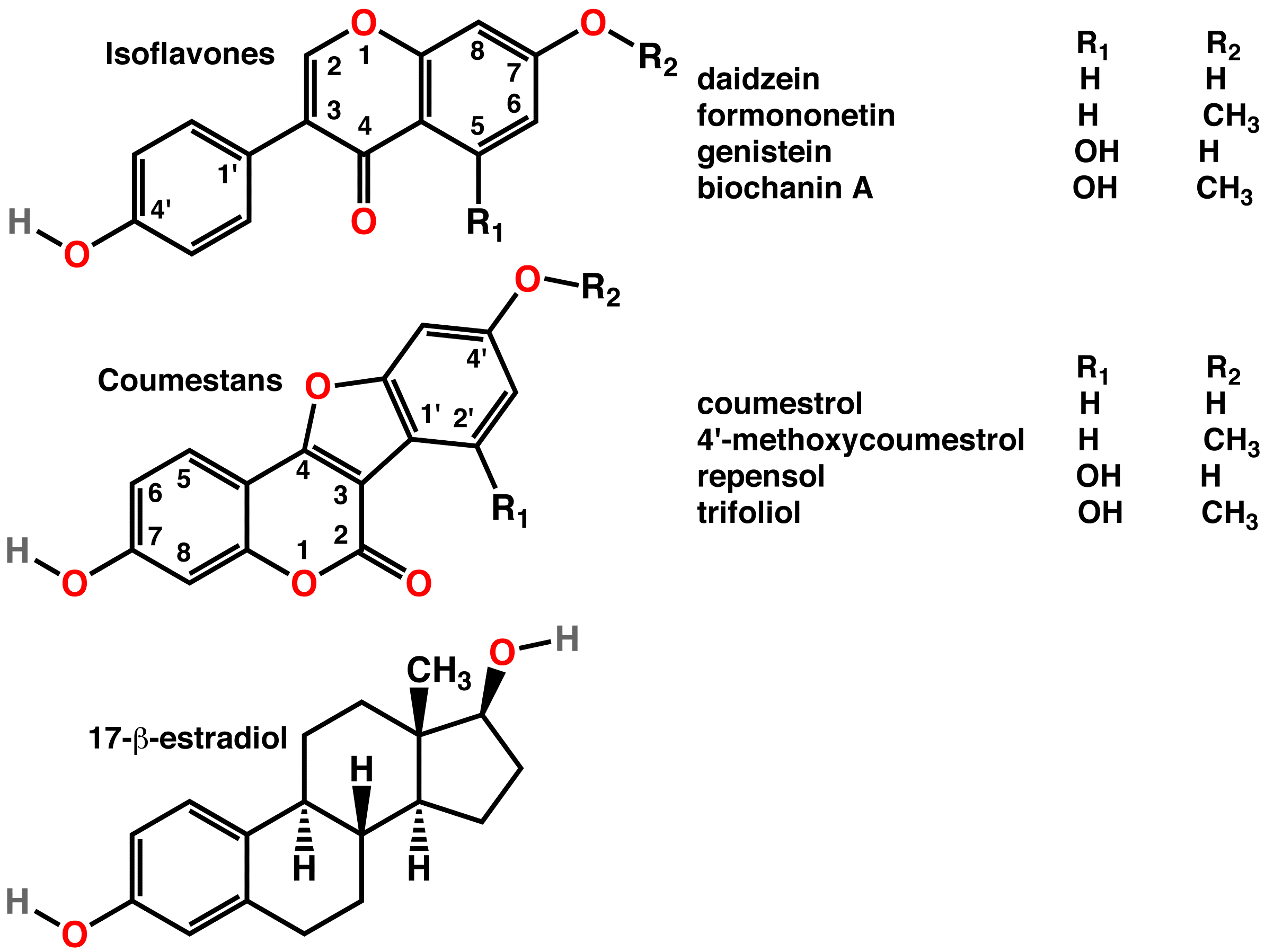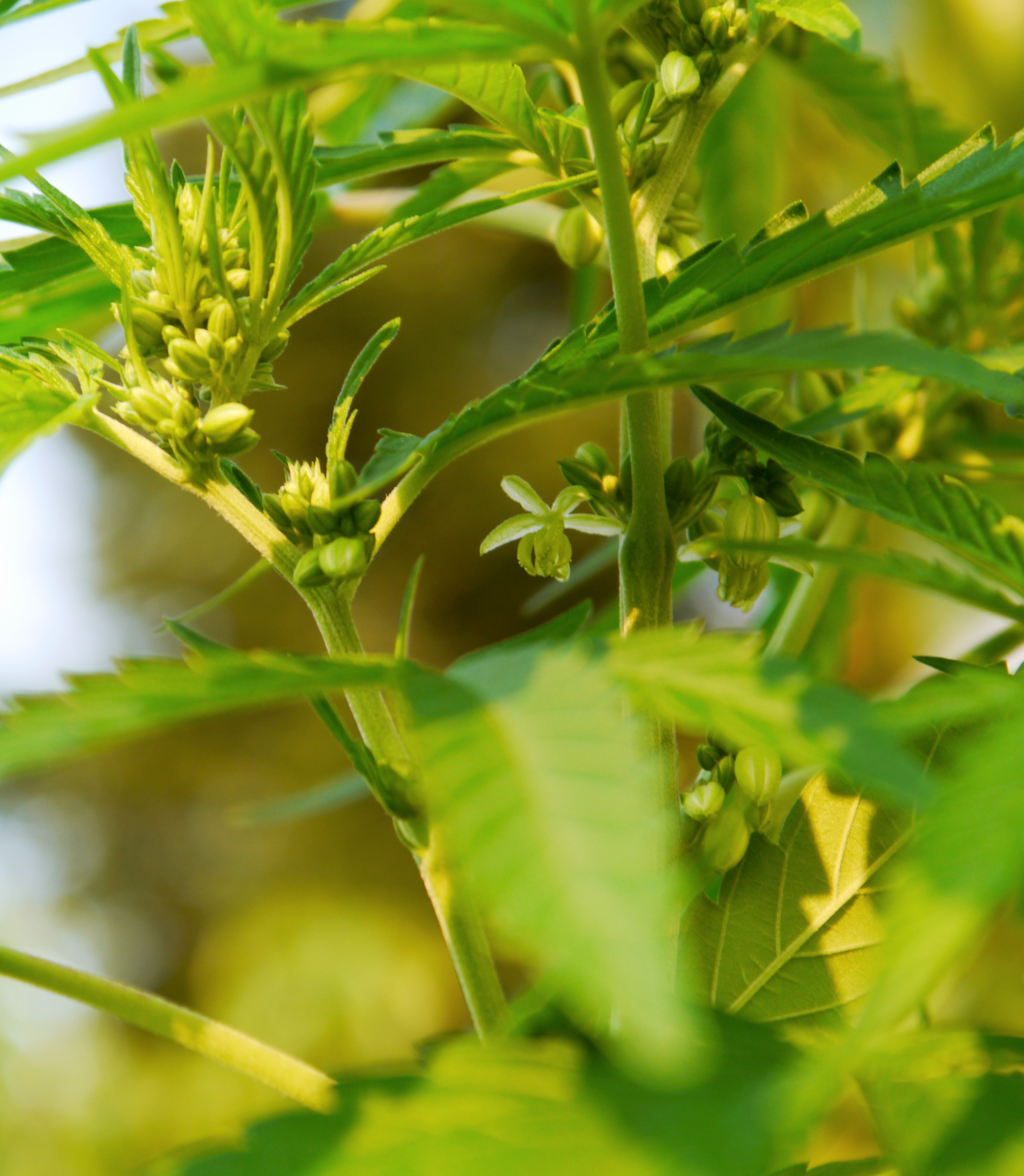|
Prenylflavonoid
Prenylated flavonoids or prenylflavonoids are a sub-class of flavonoids. They are widely distributed throughout the plant kingdom. Some are known to have phytoestrogenic or antioxidant properties. They are given in the list of adaptogens in herbalism. Chemically they have a prenyl group attached to their flavonoid backbone. It is usually assumed that the addition of hydrophobic prenyl groups facilitate attachment to cell membranes. Prenylation may increase the potential activity of its original flavonoid. Monoprenyl isoflavone epoxidase is a key enzyme in fungal ''Botrytis cinerea'' metabolism of prenylated flavonoids. Many prenylflavonoids appear to have anticancer activity in vitro. Prenylchalcones, prenylflavones, prenylflavonols and prenylflavanones are classes of prenylflavonoids. Examples 6-Prenylnaringenin, 6-geranylnaringenin, 8-prenylnaringenin and isoxanthohumol can be found in hops and beer. Of the prenylflavonoids, 8-prenylnaringenin is the most potent phytoe ... [...More Info...] [...Related Items...] OR: [Wikipedia] [Google] [Baidu] |
Isoxanthohumol
Isoxanthohumol is a prenylflavonoid, and it is a phytoestrogen. It is abbreviated as IX or IXN. 8-Prenylnaringenin can be produced from isoxanthohumol by flora in the human intestine, and by fungi in cell cultures. This prenylflavonoid is found in hops and beer. It has limited estrogenic activity. At the concentration found in beer, it is unlikely to have an estrogenic effect in breast tissue. Derivatives of isoxanthohumol are: 7,4′-Di-O-methylisoxanthohumol; 7-O-methylisoxanthohumol; 7-O-n-pentylisoxanthohumol; 7,4′-di-O-n-pentyl-8-isoxanthohumol; 7,4′-Di-O-allylisoxanthohumol; 7,4′-Di-O-acetylisoxanthohumol; and 7,4′-Di-O-palmitoylisoxanthohumol. See also * Xanthohumol Xanthohumol is a natural product found in the female inflorescences of '' Humulus lupulus'', also known as hops. This compound is also found in beer and belongs to a class of compounds that contribute to the bitterness and flavor of hops. Xanthoh ..., the corresponding prenylated chalcone Refere ... [...More Info...] [...Related Items...] OR: [Wikipedia] [Google] [Baidu] |
Morus Australis
''Morus australis'', also called Korean mulberry and Chinese mulberry, is a flowering plant species in the genus '' Morus'' found in East and Southeast Asia. The larvae of the freak (''Calinaga buddha'') feed on ''M. australis''. The substance "Australone A", a prenylflavonoid, can be found in ''M. australis''. Not a true mulberry (i.e. "Plants of the World Online" gives ''M. australis'' as a synonym of the accepted taxonomic designation, '' Broussonetia papyrifera'', the paper mulberry), its fruits and leaves are edible, and it is used as feed in raising silkworms. It is widely used for fibre production, for paper and cloth. Both the ''Broussonetia'' and the ''Morus'' genera are within Moraceae The Moraceae — often called the mulberry family or fig family — are a family of flowering plants comprising about 38 genera and over 1100 species. Most are widespread in tropical and subtropical regions, less so in temperate climates; however ... family. Referen ... [...More Info...] [...Related Items...] OR: [Wikipedia] [Google] [Baidu] |
Prenylation
Prenylation (also known as isoprenylation or lipidation) is the addition of hydrophobic molecules to a protein or a biomolecule. It is usually assumed that prenyl groups (3-methylbut-2-en-1-yl) facilitate attachment to cell membranes, similar to lipid anchors like the GPI anchor, though direct evidence of this has not been observed. Prenyl groups (also called isoprenyl groups, having one hydrogen atom more than isoprene) have been shown to be important for protein–protein binding through specialized prenyl-binding domains. Protein prenylation Protein prenylation involves the transfer of either a farnesyl or a geranylgeranyl moiety to C-terminal cysteine(s) of the target protein. There are three enzymes that carry out prenylation in the cell, farnesyl transferase, Caax protease and geranylgeranyl transferase I. Farnesylation is a type of prenylation, a post-translational modification of proteins by which an isoprenyl group is added to a cysteine residue. It is an importa ... [...More Info...] [...Related Items...] OR: [Wikipedia] [Google] [Baidu] |
Epimedium Wushanense
''Epimedium wushanense'' , the Wushan fairy wings, is a flowering plant species in the genus ''Epimedium''. Chemistry ''E. wushanense'' contains a number of flavanoids. 37 compounds were characterized from the underground and aerial parts of the plant. Among them, 28 compounds were prenylflavonoids. The predominant flavonoid, epimedin C, ranged from 1.4 to 5.1% in aerial parts and 1.0 to 2.8% in underground parts. It also contains wushanicaritin and wushankaempferol. Seven flavonoids named diphylloside A, epimedoside A, epimedin C, icariin, epimedoside C Phellamurin, a flavonoid, is the 7-O-β-D-glucopyranoside, 8-C-prenyl derivative of the flavan-on-ol Aromadendrin, and may be seen as the 7-O-glucoside of noricaritin. Being a flavanonol, it has two stereocenters on the C-ring, so four stereoiso ..., icarisoside A, desmethylanhydroicaritin, as well as oleanolic acid can be isolated from the roots. References External links wushanense Plants described ... [...More Info...] [...Related Items...] OR: [Wikipedia] [Google] [Baidu] |
Humulus Lupulus
''Humulus lupulus'', the common hop or hops, is a species of flowering plant in the hemp family Cannabinaceae, native to Europe, western Asia and North America. It is a perennial, herbaceous climbing plant which sends up new shoots in early spring and dies back to a cold-hardy rhizome in autumn. It is dioecious (having separate male and female plants). As the female cone-shaped flowers (hops) are used to preserve and flavor beer, the species is widely cultivated by the brewing industry. Description ''Humulus lupulus'' is a perennial herbaceous plant up to tall, living up to 20 years. It has simple leaves with 3–5 deep lobes that can be opposite or alternate. The species is triggered by the longer summer days to flower, usually around July or August. The plant is dioecious, with male and female flowers on separate plants. The fragrant flowers are wind-pollinated. The staminate (male) flowers do not have petals, while the pistillate (female) flowers have petals envelopin ... [...More Info...] [...Related Items...] OR: [Wikipedia] [Google] [Baidu] |
Cannflavin
Cannflavins are a group of chemical compounds found in ''Cannabis sativa''. Chemically, they are prenylflavonoids and are unrelated to THC and other cannabinoids. Cannflavins A and B were first identified in the 1980s and cannflavin C was identified in 2008. Because cannflavins A and B are inhibitors of prostaglandin E2 production ''in vitro'', the cannflavins have been studied for their potential use as anti-inflammatory agents. Biosynthesis Cannflavins A and B are biosynthesized by prenylation Prenylation (also known as isoprenylation or lipidation) is the addition of hydrophobic molecules to a protein or a biomolecule. It is usually assumed that prenyl groups (3-methylbut-2-en-1-yl) facilitate attachment to cell membranes, similar t ... of chrysoeriol. References {{reflist Prenylflavonoids ... [...More Info...] [...Related Items...] OR: [Wikipedia] [Google] [Baidu] |
Sophora Flavescens
''Sophora flavescens'', the shrubby sophora, is a species of plant in the genus ''Sophora'' of the family Fabaceae. This genus contains about 52 species, nineteen varieties, and seven forms that are widely distributed in Asia, Oceania, and the Pacific islands. About fifteen of these species have a long history of use in traditional Chinese medicines. Growth and cultivation ''Sophora flavescens'' is an evergreen slow growing shrub growing to by . It is hardy to and to US zone 6. The plant prefers light (sandy), medium (loamy) and heavy (clay) soils and requires well-drained soil. The plant prefers acid, neutral and basic (alkaline) soils. It cannot grow in the shade. It requires moist soil. Like many other species in the family Fabaceae, this species can fix nitrogen. Chemistry Chemical compounds isolated from ''S. flavescens'' include: * Matrine and matrine oxide, quinolizidine alkaloids found in the roots * Kushenin, a pterocarpan and isoflavonoid * Sophoraflavanone ... [...More Info...] [...Related Items...] OR: [Wikipedia] [Google] [Baidu] |
Millettia Pachycarpa
''Millettia pachycarpa'' (synonym ''M. taiwaniana'' Hayata) is a perennial climbing shrub belonging to the genus ''Millettia''. It is one of the most well known among ~150 species of ''Millettia'', as it is widely used in traditional practices, such as for poisoning fish, agricultural pesticide, blood tonic, and treatments of cancer and infertility. The bark fiber is used for making strong ropes. It is endemic to south-east Asian region including Bangladesh, Bhutan, China, India, Myanmar, Nepal, Taiwan, Thailand and Vietnam. In India it is found only in the eastern region such as Arunachal Pradesh, Assam, Meghalaya, Manipur, Mizoram, Nagaland, Sikkim, Tripura and West Bengal. Description ''Millettia pachycarpa'' is a climbing shrub. It has dark brown inflated legumes that are densely covered with rough pale yellow warts. The leguminous pods contain one to five dark brown reniform seeds. The leaves have 13 to 17 papery leaflets and the flowers are lilac-colored. Rachis a ... [...More Info...] [...Related Items...] OR: [Wikipedia] [Google] [Baidu] |
Prenyl
Prenylation (also known as isoprenylation or lipidation) is the addition of hydrophobic molecules to a protein or a biomolecule. It is usually assumed that prenyl groups (3-methylbut-2-en-1-yl) facilitate attachment to cell membranes, similar to lipid anchors like the GPI anchor, though direct evidence of this has not been observed. Prenyl groups (also called isoprenyl groups, having one hydrogen atom more than isoprene) have been shown to be important for protein–protein binding through specialized prenyl-binding domains. Protein prenylation Protein prenylation involves the transfer of either a farnesyl or a geranylgeranyl moiety to C-terminal cysteine(s) of the target protein. There are three enzymes that carry out prenylation in the cell, farnesyl transferase, Caax protease and geranylgeranyl transferase I. Farnesylation is a type of prenylation, a post-translational modification of proteins by which an isoprenyl group is added to a cysteine residue. It is an important ... [...More Info...] [...Related Items...] OR: [Wikipedia] [Google] [Baidu] |
Phytoestrogens
A phytoestrogen is a plant-derived xenoestrogen (see estrogen) not generated within the endocrine system, but consumed by eating plants or manufactured foods. Also called a "dietary estrogen", it is a diverse group of naturally occurring nonsteroidal plant compounds that, because of its structural similarity with estradiol (17-β-estradiol), have the ability to cause estrogenic or antiestrogenic effects. Phytoestrogens are not essential nutrients because their absence from the diet does not cause a disease, nor are they known to participate in any normal biological function. Common foods containing phytoestrogens are soy protein, beans, oats, barley, rice, coffee, apples, carrots (see Food Sources section below for bigger list). Its name comes from the Greek ''phyto'' ("plant") and ''estrogen'', the hormone which gives fertility to female mammals. The word "estrus" - Greek οίστρος - means "sexual desire", and "gene" - Greek γόνο - is "to generate". It has been hypot ... [...More Info...] [...Related Items...] OR: [Wikipedia] [Google] [Baidu] |
Cannabis Sativa
''Cannabis sativa'' is an annual herbaceous flowering plant indigenous to Eastern Asia, but now of cosmopolitan distribution due to widespread cultivation. It has been cultivated throughout recorded history, used as a source of industrial fiber, seed oil, food, recreation, religious and spiritual moods and medicine. Each part of the plant is harvested differently, depending on the purpose of its use. The species was first classified by Carl Linnaeus in 1753. The word ''sativa'' means "things that are cultivated." Plant physiology The flowers of ''Cannabis sativa'' are unisexual and plants are most often either male or female. It is a short-day flowering plant, with staminate (male) plants usually taller and less robust than pistillate (female or male) plants. The flowers of the female plant are arranged in racemes and can produce hundreds of seeds. Male plants shed their pollen and die several weeks prior to seed ripening on the female plants. Under typical conditions with a ... [...More Info...] [...Related Items...] OR: [Wikipedia] [Google] [Baidu] |

-2017-Ystad.jpg)


